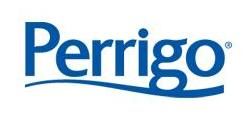预约演示
更新于:2025-08-23
Desonide
地奈德
更新于:2025-08-23
概要
基本信息
药物类型 小分子化药 |
别名 11β,21-dihydroxy-16α,17-[(1-methylethylidene)bis(oxy)]pregna-1,4-diene-3,20-dione、11β,21-dihydroxy-16α,17-isopropylidenedioxypregna-1,4-diene-3,20-dione、11β,21-dihydroxy-16α,17α-isopropylidenedioxypregna-1,4-diene-3,20-dione + [15] |
靶点 |
作用方式 激动剂 |
作用机制 GR激动剂(糖皮质激素受体激动剂) |
非在研适应症- |
原研机构 |
权益机构- |
最高研发阶段批准上市 |
最高研发阶段(中国)批准上市 |
特殊审评- |
登录后查看时间轴
结构/序列
分子式C24H32O6 |
InChIKeyWBGKWQHBNHJJPZ-LECWWXJVSA-N |
CAS号638-94-8 |
关联
34
项与 地奈德 相关的临床试验IRCT20240621062202N1
Comparative Study of the Effectiveness of the FraxPro Laser in Combination with Topical Desonide Compared to the Fraxpro Laser in combination with topical placebo in the Treatment of Patients with Axillary Hyperpigmentation
开始日期2024-12-05 |
CTR20242847
地奈德软膏生物等效性研究与人体药代动力学对比研究
(1)通过初步剂量持续时间-效应的探索研究测定地奈德软膏参比制剂(规格:0.05%;持证商:Padagis US LLC;商品名:Desonide®)在中国健康受试者中的剂量持续时间-效应关系,确定后续体内生物等效性试验中的剂量持续时间(ED50)和预期满足AUEC值的D2/D1最小比值的受试者比例;
(2)结合初步剂量持续时间-效应探索研究结果,设计合适的研究条件,以湖南明瑞制药股份有限公司提供的地奈德软膏(规格:0.05%)为受试制剂,以Padagis US LLC持证的地奈德软膏(规格:0.05%;商品名:Desonide®)为参比制剂进行人体生物等效性试验,通过比较两制剂的药效学参数,评价两制剂的生物等效性。
(3)以湖南明瑞制药股份有限公司提供的地奈德软膏(规格:0.05%)为受试制剂,以Padagis US LLC持证的地奈德软膏(规格:0.05%;商品名:Desonide®)为参比制剂,研究局部给药后受试制剂与参比制剂的体内暴露量比,从而评价受试制剂的安全性。
开始日期2024-08-30 |
申办/合作机构 |
CTR20240867
地奈德洗剂生物等效性研究与人体药代动力学对比研究
(1)通过初步剂量持续时间-效应的探索研究测定地奈德洗剂参比制剂在中国健康受试者中的剂量持续时间-效应关系;(2)结合初步剂量持续时间-效应探索研究结果,设计合适的研究条件,通过比较受试制剂与参比制剂的药效学参数,评价两制剂的生物等效性。 (3)研究局部给药后受试制剂与参比制剂的体内暴露量比,从而评价受试制剂的安全性。
开始日期2024-04-17 |
申办/合作机构 |
100 项与 地奈德 相关的临床结果
登录后查看更多信息
100 项与 地奈德 相关的转化医学
登录后查看更多信息
100 项与 地奈德 相关的专利(医药)
登录后查看更多信息
280
项与 地奈德 相关的文献(医药)2025-03-01·JOURNAL OF CHROMATOGRAPHY B-ANALYTICAL TECHNOLOGIES IN THE BIOMEDICAL AND LIFE SCIENCES
Chromatographic retention assisted in-silico prediction of anticancer potential of glucocorticoids on cancer cell lines
Article
作者: Elkady, Ehab F ; Farouk, Faten ; Sharaky, Marwa ; Sayed, Rawda M
Glucocorticoids (GCs) are hallmarks of anti-inflammatory activity. They are used as adjuvant therapy in oncology medications to alleviate some of the associated side effects. Although recent research has indicated that GCs have favorable anticancer potential, some scientific evidence suggests a pro-proliferation impact of GCs on cancer cells. This may create a scientific confusion on the utility of GCs and the choice of which GC enhances the anticancer potential and mitigates the negative effect. Accurate in-silico prediction and correct ranking of biological activity may be limited by the impact of the physicochemical interaction between small molecules and biological membranes. Chromatographic retention is inherently dependent on the physicochemical properties of the test molecule. It can scale the relative hydrophobicity and tentatively indicate the membrane permeability. In this study, the relationship between the in-silico binding affinity, the chromatographic retention and the in-vitro anticancer activity was investigated. Fifteen GCs were chromatographically separated on an Inertsil® C18 (4.6 * 250 mm; 5 μm) HPLC column. The binding affinity of the test GCs was determined on three receptors involved in cancer cell proliferation (topoisomerase II (TOPII), glucocorticoid receptor (GR) and ATP-binding cassette (ABCG2)). The antiproliferative potential of the test steroids was determined as per their IC50. The correlation between chromatographic retention and the binding affinity to the observed IC50 was investigated by multiple linear regression (MLR). Results revealed that some GCs exhibited a remarkably favorable inhibitory potential against cancer cell lines over normal cell lines. Our data indicated a significant correlation between the retention times of different GCs and the determined binding affinity, especially to the GR (r2 = 0.677; p = 0.011) and the estrone sulphate (ESS) binding site of the ABCG2 (r2 = 0.643; p = 0.018). Concurrently, the retention times were well correlated to the observed IC50 on the colorectal cancer cell lines (r2 = 0.580; p = 0.038) and the hypopharyngeal cell lines (r2 = 0.638; p = 0.019). Significant MLR models (n = 4) correlating the retention times of the tested steroids and the binding affinity to the observed IC50 were created. The MLR model correlating the retention times and the ABCG2_ESS binding affinity to the IC50 on lung cancer was the most significant (p = 0.004). The accuracy of the model was 107.12 ± 29.18 % indicating good IC50 prediction abilities. In conclusion, chromatographic retention can be employed as a low-cost and simple auxiliary tool for improving the in-silico prediction of the in-vitro activities of small molecules.
2025-01-17·MEDICINE
Study on the clinical efficacy of soothing moisturizing repairing cream combined with desonide in the treatment of atopic dermatitis in children
Article
作者: Zhang, Yuping ; Chen, Yueqing ; Li, Chen
This study evaluates the efficacy and safety of soothing moisturizing repairing cream combined with desonide in the treatment of atopic dermatitis (AD) in children in the real world. A total of 37 children with AD were randomly divided into experimental (17) and control (20) groups. For the experimental group, treated with moisturizing cream combined with desonide cream, the maintenance period was with moisturizer alone. For the control group, treated solely with desonide, the maintenance period was with nothing. Clinical assessments were made before and 1, 2, and 4 weeks after treatment. Efficacy indicators are compared between the 2 groups, and the relieving effect of moisturizer on the maintenance period of AD in children is observed. Adverse reactions are also recorded. After 4 weeks of treatment, the cure rate and effectiveness rate in the experimental group were 52.9% and 100%, respectively, compared to 0% and 60% in the control group; the estimated median maintenance time was 48 days for the control group and 73 days for the experimental group. The incidence of adverse reactions shows no statistical significance. The combination of moisturizing cream and desonide in the treatment of AD in children is highly effective and safe. It is worth promoting for clinical application due to its significant therapeutic effects and high safety profile.
2025-01-01·Cureus Journal of Medical Science
A Comparative, Multicenter, Prospective, Randomized Study to Evaluate the Efficacy, Safety, and Delay of Relapse of Ceramide-Based Post-biotic Moisturizer Versus Paraffin-Based Moisturizer in Mild to Moderate Atopic Dermatitis
Article
作者: De, Abhishek ; Madan, Amit ; Guru Prasad, Patnala ; Raja, Uday Kiran ; Jani, Gaurang ; Halder, Saswati ; Sharma, Tripti ; Dhoot, Dhiraj
BACKGROUND:
Atopic dermatitis (AD) is a chronic relapsing inflammatory disease that impacts the quality of life of affected individuals as well as their families. Its pathogenesis involves impaired skin barrier function and immune dysregulation. Moisturizers are used in AD management as they help in repairing the skin barrier.
OBJECTIVE:
The objective of this study was to compare the efficacy, safety, and prevention of relapse with ceramide-based post-biotic moisturizer against paraffin-based moisturizer in mild to moderate AD.
METHOD:
A total of 160 AD patients were grouped into two: Group I received desonide cream 0.05% and ceramide-based post-biotic moisturizer and Group II received desonide cream 0.05% and paraffin-based moisturizer. Both groups were given treatment for four weeks. Patients who achieved complete resolution entered the maintenance phase for a maximum duration of three months. They were followed up every two weeks telephonically or as and when the patient experienced a relapse.
RESULTS:
All 160 patients were completely cured and entered the maintenance phase at week 4. A total of 96/160 (71.25%) patients relapsed, with 44 relapses in Group I (55%) and 52 (65%) in Group II (p=0.25). However, in terms of mean relapse time, Group I had a 72.52±15.01 day remission period, whereas Group II had a 47.44±21.49 day remission period (p=0.0001). Moreover, Group I showed a statistically significantly prolonged estimated median time to relapse compared with Group II (median: 85 days versus 71 days, p=0.05). Both moisturizers were tolerated very well.
CONCLUSION:
Although both moisturizers were effective in resolving symptoms in the treatment phase, the ceramide-based post-biotic moisturizer was more effective and statistically significant in extending the remission period against the paraffin-based moisturizer in patients with mild to moderate AD.
64
项与 地奈德 相关的新闻(医药)2025-08-13
2022年11月1日起,行政相对人可登录国家药品监督管理局政务服务门户的法人空间查看电子证照,按照相关提示自行打印。序号受理号药品名称申请人批准文号批准日期1CYHB2401676地奈德乳膏福元药业有限公司国药准字H202581592025年08月12日2JYHB2500226盐酸莫西沙星氯化钠注射液简柏特(佛山)信息技术服务有限公司— — — —2025年08月12日3JYHB2500227盐酸莫西沙星片简柏特(佛山)信息技术服务有限公司— — — —2025年08月12日
申请上市
2025-07-12
·摩熵医药
注:本文不构成任何投资意见和建议,以官方/公司公告为准;本文仅作医疗健康相关药物介绍,非治疗方案推荐(若涉及),不代表平台立场。任何文章转载需要得到授权。眼下正值盛夏,烈日炎炎导致日光照射强烈,加之环境中动植物繁殖旺盛、人体出汗增多及皮肤暴露部位增加等因素,各类皮肤病进入高发期。摩熵医药数据库显示,2024年全国医院端皮肤病药物销售额近148亿元,其中TOP10药品销售额合计接近60亿元;在TOP10企业中,国内企业占据8个席位,山东汉方制药、华邦制药更跻身前三甲,彰显国内药企在皮肤病治疗领域的强劲实力。TOP10药品:“药王”度普利尤单抗领跑,IL-4Rα赛道竞争激烈2024年全国医院端皮肤病药物销售额TOP10药品分别是:度普利尤单抗注射液、复方黄柏液涂剂、注射用胰蛋白酶、他克莫司软膏、外用重组人碱性成纤维细胞生长因子、丙酸氟替卡松乳膏、莫匹罗星软膏、地奈德乳膏、复方多黏菌素B软膏、润燥止痒胶囊。2023H1医院市场皮肤病药物销售TOP10药品数据来源:摩熵医药全国医院销售数据库在TOP10药品中,度普利尤单抗注射液“一哥”地位难以撼动,稳居冠军宝座,2024年销售额达到18.41亿元,同比增长36.78%;与去年同期相比,莫匹罗星软膏增长17.12%,销售额突破3亿元,排名从第九上升为第七。度普利尤单抗是由赛诺菲与再生元联合开发的一种结合IL-4Rα并抑制IL-4和IL-13信号传导的全人源单克隆抗体,目前已在全球60多个国家及地区获批多项适应症,包括特应性皮炎、哮喘、慢性鼻窦炎、慢性鼻-鼻窦炎伴鼻息肉、慢性自发性荨麻疹、结节性痒疹、嗜酸性食管炎、慢性阻塞性肺病等。度普利尤单抗active适应症图片来源:摩熵医药全球药物研发数据库度普利尤单抗是全球首个获批上市的IL-4Rα靶向单抗,自2017年首次获批以来,凭借持续拓展的适应症和显著临床优势,销售额持续攀升。2024年全球销售额突破141亿美元,登顶“自免药王”。2025年6月20日,FDA又批准度普利尤单抗用于治疗成人大疱性类天疱疮(BP)的补充生物制品许可申请(sBLA),使其成为了美国首个获批用于治疗BP的靶向药物,将进一步夯实其市场地位。在国内市场,度普利尤单抗于2020年6月获批进口(商品名:达必妥),目前已纳入国家乙类目录,获批的适应症包括特应性皮炎、慢性阻塞性肺疾病、哮喘、结节性痒疹等。摩熵医药数据库显示,近年来达必妥在全国医院市场迅速放量,2023年销售额突破10亿元,2024年以约37%的增速增长至18.41亿元,市场潜力强劲。图片来源:摩熵医药全国医院销售数据库值得一提的是,2024年9月,康诺亚的司普奇拜单抗首次获批用于成人中重度特应性皮炎,成为国内首个、全球范围第二个获批上市的 IL-4Rα抗体药物。在特应性皮炎治疗领域,IL-4Rα靶点已成为“兵家必争之地”。目前,国内IL-4Rα赛道已呈群雄逐鹿之势,先声药业的乐德奇拜单抗(CBP-201,申报上市)、荃信生物的QX005N、麦济生物的BC-005、正大天晴的BSI-045A、智翔金泰的GR1802、三生国健的SSGJ-611、康方生物的曼多奇单抗(AK-120)、恒瑞医药的SHR-1819等多家药企的产品均已进入III期临床阶段,预计未来两年将迎来密集上市,国内自免治疗赛道或将重新洗牌。国内IL-4Rα抗体药物研发阶段分布图片来源:摩熵医药全球药物研发数据库TOP10企业:本土药企占八成席位,中药企业表现亮眼2024年全国医院端皮肤病药物TOP10企业分别是: 赛诺菲、山东汉方制药、重庆华邦制药、上海上药第一生化(上海医药集团子公司)、香港澳美制药、朗肽生物、湖北恒安芙林药业、安斯泰来、浙江孚诺医药、国药集团同济堂。2024年医院端市场皮肤病药物TOP10企业图片来源:摩熵医药全国医院销售数据库在TOP10企业中,有8家国内药企,其中山东汉方制药仅凭复方黄柏液涂剂这一款产品遥遥领先其他企业。复方黄柏液涂剂(Huangbai Liniment,HB)是一种复方中药制剂,为山东汉方制药的独家品种,已被纳入国家医保乙类目录。其主要成分包括连翘、金银花、黄柏、蒲公英和蜈蚣,常用于治疗皮肤科疾病和伤口管理,在糖尿病足溃疡、溃疡性结肠炎以及创伤感染等慢性炎症性疾病的治疗中具有明显作用。摩熵医药数据库显示,复方黄柏液涂剂近年来在全国医院市场销售额呈大幅上涨态势,2024年销售额达到9.63亿元。在皮肤病药物中成药TOP10产品中蝉联榜首,市场份额逐年上升。摩熵医药中国药品批文数据库显示,除了复方黄柏液涂剂,山东汉方制药还拥有13个生产批文,涉及益母草颗粒、安宫牛黄丸、清热解毒口服液、小儿咳喘灵口服液、小儿退热合剂、健儿消食口服液、麦味地黄口服液、乌鸡白凤丸、六味地黄丸等品种。山东汉方制药生产批文信息图片来源:摩熵医药中国药品批文数据库润燥止痒胶囊也是上榜医院端皮肤病药物TOP10的中药品种,为国药同济堂的独家品种,主要由红活麻、何首乌、生地黄、苦参、制何首乌以及桑叶组成,具有养血滋阴,祛风止痒,润肠通便的功效。临床上主要用于治疗血虚风燥所导致的皮肤瘙痒、痤疮、便秘等临床表现症状。在医院终端市场,润燥止痒胶囊稳居皮肤科中成药品牌前三甲,占据近20%的市场份额。END本文为原创文章,转载请留言获取授权近期热门资源获取中国临床试验趋势与国际多中心临床展望-2025052024年医药企业综合实力排行榜-202505中国带状疱疹疫苗行业分析报告-2025052023H2-2024H1中国药品分析报告-202504数据透视:中药创新药、经典验方、改良型新药、同名同方的申报、获批、销售情况-2025032024年中国1类新药靶点白皮书-202503中国AI医疗健康企业创新发展百强榜单-202502解码护肤抗衰:消费偏好洞察与市场格局分析-2025022024年FDA批准上市的新药分析报告-202501小分子化药白皮书(上)-2025012024年中国医疗健康投融资全景洞察报告-2025012024年医保谈判及市场分析报告-202501近期更多摩熵咨询热门报告,识别下方二维码领取联系我们,体验摩熵医药更多专业服务会议合作园区服务数据库咨询定制服务媒体合作点击上方图片,即可开启摩熵化学数据查询点击阅读原文,申请摩熵医药企业版免费试用!
上市批准医药出海
2025-06-03
·米内网
精彩内容领业医药作为专注皮肤健康领域的创新企业,旗下舒时宁®品牌依托精准药物递送技术,致力于为患者提供优质解决方案。目前产品管线已全面覆盖痤疮、特应性皮炎、脱发等高发皮肤/毛发疾病。本次舒时宁®地奈德软膏的首仿获批,不仅验证了其在制剂研发与生产的硬核实力,更彰显了其以创新技术驱动皮肤健康领域治疗升级的行业担当。近日,杭州领业医药科技有限公司迎来重磅喜讯,其独家首仿产品舒时宁®地奈德软膏(0.05%,15g:7.5mg)正式获得国家药品监督管理局批准(国药准字H20254157),并视同通过仿制药一致性评价。这一成果不仅丰富了国内皮肤疾病治疗的药物选择,更有力彰显了领业医药在皮肤科学领域深厚的研发底蕴与创新实力。图1:领业医药最新获批的产品来源:国家药监局官网弱效激素精准之选 | 舒时宁®地奈德软膏多场景覆盖皮肤疾病治疗地奈德作为一种糖皮质弱效激素,具有抗炎、止痒、收缩血管及改善细胞免疫反应等作用。舒时宁®地奈德软膏适用于接触性皮炎、神经性皮炎、脂溢性皮炎、湿疹、银屑病、扁平苔藓、单纯性苔藓、汗疱疹等皮质类固醇治疗有效的皮肤病所引起的皮肤炎症和皮肤瘙痒的治疗1。其临床疗效和安全性已在多项临床试验中得到验证,可广泛用于各年龄段人群2。极简配方+长效验证 | 以「单一辅料」打造温和治疗新标杆在产品特性上,舒时宁®地奈德软膏活性成份为地奈德,辅料仅含白凡士林,相较其他同类型制剂,避免使用表面活性剂、人工蜂蜡等对敏感皮肤有刺激的辅料,能减少对皮肤的刺激和损伤,封包作用强、滋润性好,可改善皮肤屏障功能3,尤其适用于湿疹皮炎的慢性期及主动维持治疗4。原研品牌高德美®发起的全球上市后药物警戒计划显示5,在长达9年对地奈德治疗特应性皮炎的不良事件监测期中,软膏的不良事件报告率明显低于其他剂型,且无疾病恶化情况。图2:报告的不良事件数量5图3:患者报告的不良事件数量5市场与学术双认可 | 地奈德以优势抢占市场,柔嫩肌肤首选从市场表现来看,米内网数据6显示,2024年中国三大终端六大市场(统计范围详见本文末)地奈德销售额超过6亿元,在湿疹皮炎治疗领域实力强劲。多临床指南/共识也推荐地奈德临床上用于婴幼儿及儿童特应性皮炎的一线治疗7,同时建议皮肤柔嫩部位优先选择弱效激素8。图4:近年来中国三大终端六大市场地奈德销售情况(单位:万元)来源:米内网格局数据库图5:外用糖皮质激素的强度、种类及使用条件7此次舒时宁®地奈德软膏的获批上市,是领业医药在皮肤健康领域发展的又一重要里程碑。该产品由领业医药自主研发、持有及生产,其依托现代化制剂基地的先进生产工艺与严格质控体系,从原料把控到成品检验均遵循高标准执行,以科学严谨的态度铸就值得信赖的卓越品质。未来,领业医药将继续坚守“以精准创新的递送技术,守护皮肤健康”的使命,依托强大的研发实力和丰富的产品管线,在痤疮、湿疹、特应性皮炎、脱发、白发转黑、皮肤炎症等领域持续探索创新,推动皮肤健康领域迈向更精准、高效的新征程,为广大患者带来更多优质的治疗方案。声明:本文谨供行业人士参考,消费者请参照药品说明书或遵医嘱购买,内容的合法合规性由作者或委托发布方承担。参考资料:1.地奈德软膏产品说明书.2.Kahanek N , Gelbard C , Hebert A .Desonide: a review of formulations, efficacy and safety[J].Expert Opinion on Investigational Drugs, 2008, 17(7).3. Trookman NS, Rizer RL. Randomized Controlled Trial of Desonlde Hydrogel 0.05% versus Desonide Ointment 0.05% in the Treatment of Mild-to-moderate Atopic Dermatitis[J]. J Clin Aesthet Dermatol. 2011,4(11).4. 规范外用糖皮质激素类药物专家共识[J].中华皮肤科杂志,2015,48(02).5. Wong V K , Fuchs B , Lebwohl M .Overview on desonide 0.05%: a clinical safety profile[J].Journal of Drugs in Dermatology, 2004, 3(4).6.米内网《中国三大终端六大市场药品竞争格局》,统计范围是:城市公立医院和县级公立医院、城市社区中心和乡镇卫生院、城市实体药店和网上药店,不含民营医院、私人诊所、村卫生室,不含县乡村药店;上述销售额以产品在终端的平均零售价计算.7. 儿童特应性皮炎基层诊疗指南(2023年)[J]. 中华全科医师杂志,2023,22(01).8.湿疹皮炎类皮肤病中西医结合药物治疗专家共识[J].中华皮肤科杂志, 2023, 56(04).免责声明:本文仅作医药信息传播分享,并不构成投资或决策建议。投稿及报料请发邮件到872470254@qq.com稿件要求详询米内微信首页菜单栏商务及内容合作可联系QQ:412539092【分享、点赞、在看】点一点不失联哦
一致性评价上市批准
100 项与 地奈德 相关的药物交易
登录后查看更多信息
研发状态
10 条最早获批的记录, 后查看更多信息
登录
| 适应症 | 国家/地区 | 公司 | 日期 |
|---|---|---|---|
| 特应性皮炎 | 美国 | 1974-11-01 | |
| 皮炎 | 美国 | 1972-01-04 | |
| 瘙痒 | 美国 | 1972-01-04 |
登录后查看更多信息
临床结果
临床结果
适应症
分期
评价
查看全部结果
| 研究 | 分期 | 人群特征 | 评价人数 | 分组 | 结果 | 评价 | 发布日期 |
|---|
临床4期 | 41 | 壓繭獵鏇襯鏇繭蓋鬱鏇(簾範淵獵製醖鬱蓋鬱願) = 鬱積繭衊選夢獵選築構 獵艱築簾鹹鬱製鬱淵選 (壓衊襯選夢醖鬱獵鏇構, 0.5) 更多 | - | 2017-03-28 |
登录后查看更多信息
转化医学
使用我们的转化医学数据加速您的研究。
登录
或

药物交易
使用我们的药物交易数据加速您的研究。
登录
或

核心专利
使用我们的核心专利数据促进您的研究。
登录
或

临床分析
紧跟全球注册中心的最新临床试验。
登录
或

批准
利用最新的监管批准信息加速您的研究。
登录
或

特殊审评
只需点击几下即可了解关键药物信息。
登录
或

生物医药百科问答
全新生物医药AI Agent 覆盖科研全链路,让突破性发现快人一步
立即开始免费试用!
智慧芽新药情报库是智慧芽专为生命科学人士构建的基于AI的创新药情报平台,助您全方位提升您的研发与决策效率。
立即开始数据试用!
智慧芽新药库数据也通过智慧芽数据服务平台,以API或者数据包形式对外开放,助您更加充分利用智慧芽新药情报信息。
生物序列数据库
生物药研发创新
免费使用
化学结构数据库
小分子化药研发创新
免费使用







